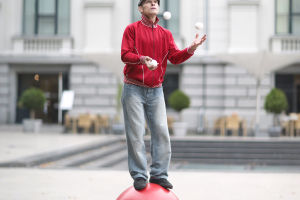Capturing indoor photos with an artistic flair can turn ordinary spaces into extraordinary visual stories.
Unlike outdoor photography, indoor capturing challenges you to creatively use limited light, space, and backgrounds to craft images that feel intentional and expressive.
This guide will walk you through how to harness light, compose your shots thoughtfully, and choose backgrounds that enhance the mood, helping you create stunning indoor photos with a professional touch.
Harness Natural Light as Your Primary Tool
Natural light is the most beautiful and versatile source for indoor photography. Position your subject near windows during morning or late afternoon when sunlight is softer and warmer. Avoid harsh midday sun that creates strong shadows and highlights.
Use sheer curtains to diffuse light, producing a gentle glow that flatters subjects and adds a dreamy quality. Side lighting adds depth and texture, while backlighting can create ethereal silhouettes or glowing outlines. Experiment with angles relative to windows to find the most flattering light.
Balance Artificial and Natural Light
When natural light is insufficient, supplement with artificial sources like LED panels or softboxes. The key is to balance color temperature—mixing warm and cool lights carefully to avoid unnatural tones. Use diffusers or bounce light off walls and ceilings to soften shadows.
Practical lamps or candles can add warmth and atmosphere, enhancing the artistic mood. Layering multiple light sources lets you sculpt shadows and highlights, giving your photos dimension and richness.
Master Composition Techniques for Artistic Impact
Composition shapes how viewers experience your photo. Use the rule of thirds to place key elements off-center for dynamic balance. Incorporate leading lines—such as furniture edges or window frames—to guide the eye through the image. Frame your subject creatively using doorways, mirrors, or curtains to add depth and context.
Negative space can emphasize simplicity and mood, while symmetrical compositions convey harmony and calm. Don't hesitate to break traditional rules for creative effect, but do so intentionally.
Choose Backgrounds that Complement Your Subject
Backgrounds should enhance, not distract. Opt for uncluttered, neutral-colored walls or textured surfaces like brick or wood that add visual interest without overwhelming. Incorporate elements that tell a story—plants, books, or artwork—to add personality. Use fabric backdrops or curtains to control color and texture.
Pay attention to background lighting to avoid harsh contrasts or distracting reflections. Sometimes, a shallow depth of field helps blur backgrounds, keeping focus on your subject while maintaining an artistic feel.
Play with Shadows and Highlights
Shadows and highlights are powerful artistic tools. Soft shadows add dimension and mood, while strong contrasts can create dramatic, graphic effects. Use directional light to cast interesting shadows from window blinds or objects. Rim lighting—placing light behind the subject—creates glowing edges that separate the subject from the background.
Experiment with silhouettes by exposing for the background light. These techniques add mystery and emotion to your indoor photos.
Incorporate Color and Texture Thoughtfully
Color influences mood and style. Harmonize colors in your scene by choosing complementary tones or monochromatic palettes. Warm colors evoke coziness, while cool tones suggest calm or melancholy. Textures like velvet cushions, wooden furniture, or woven rugs add tactile richness and visual layers.
Combining color and texture thoughtfully enhances the sensory experience of your photos, making them more engaging and artistic.
Final Tips: Practice and Experiment Creatively
Creating artistic indoor photos is a journey of exploration. Practice taking photos at different times of day, with various light sources and compositions. Review your images critically to learn what works and what doesn't. Don't be afraid to try unconventional angles, props, or editing styles to express your vision.
Remember, the goal is to convey mood and story, not just document space.
What artistic indoor photo ideas inspire you? Share your experiences or questions—we'd love to hear how you bring creativity into your home photography!


